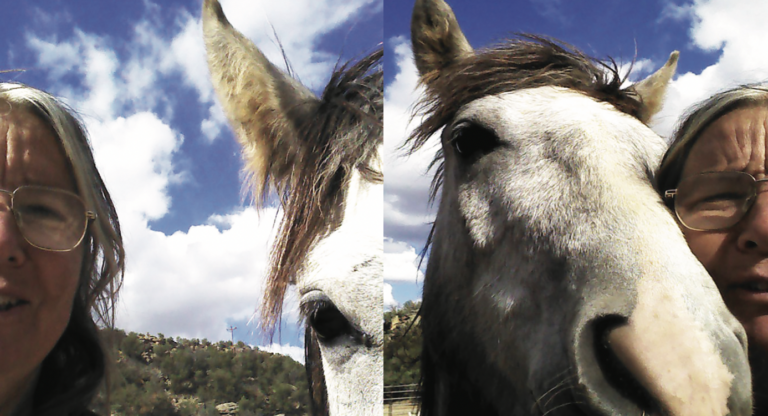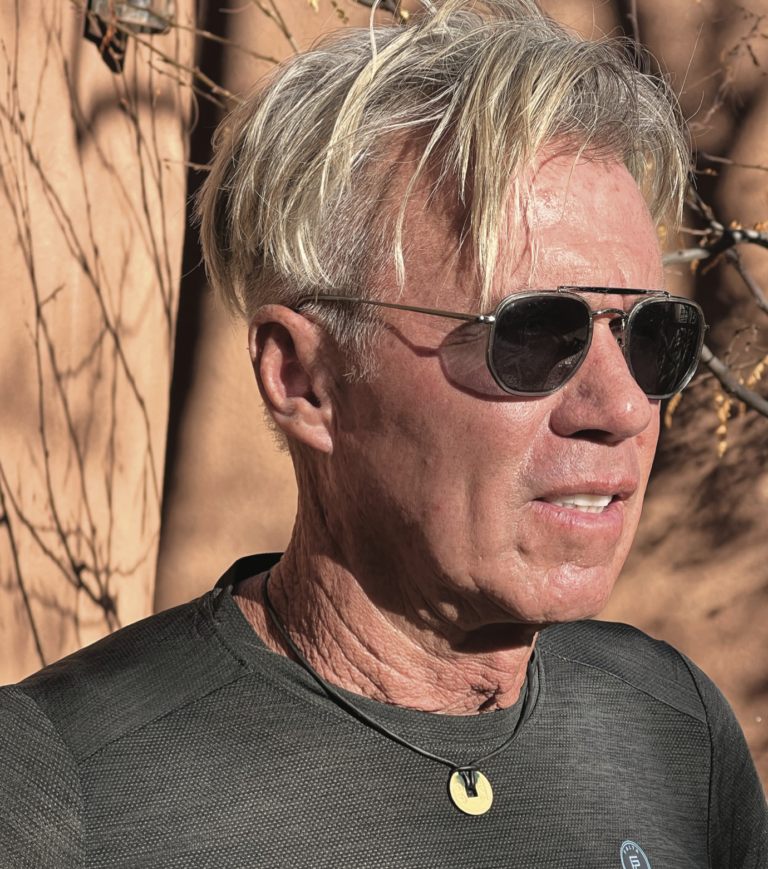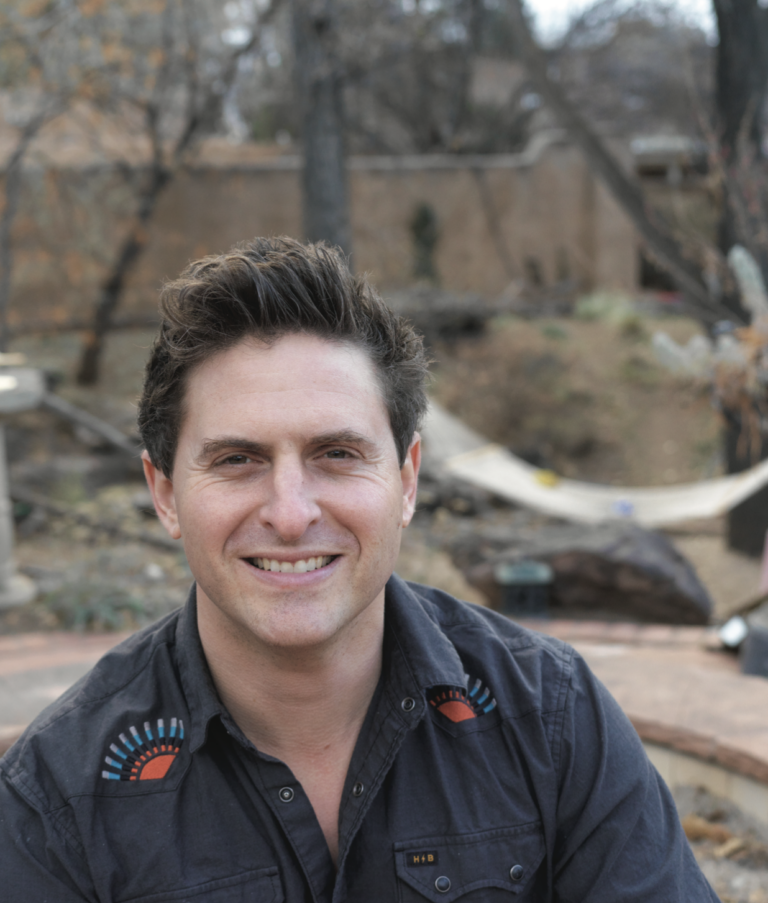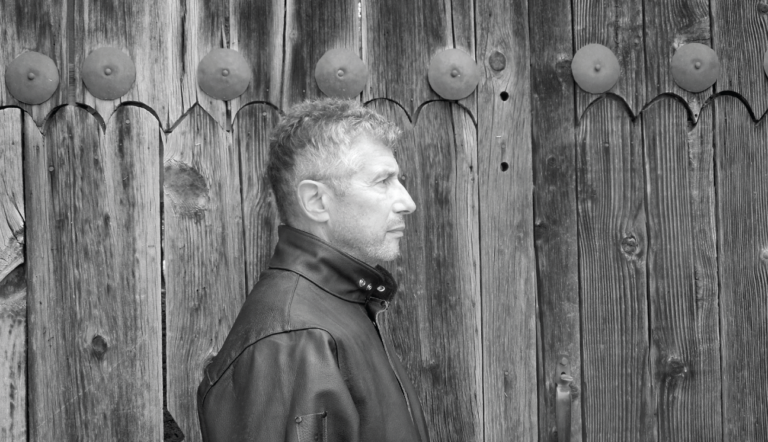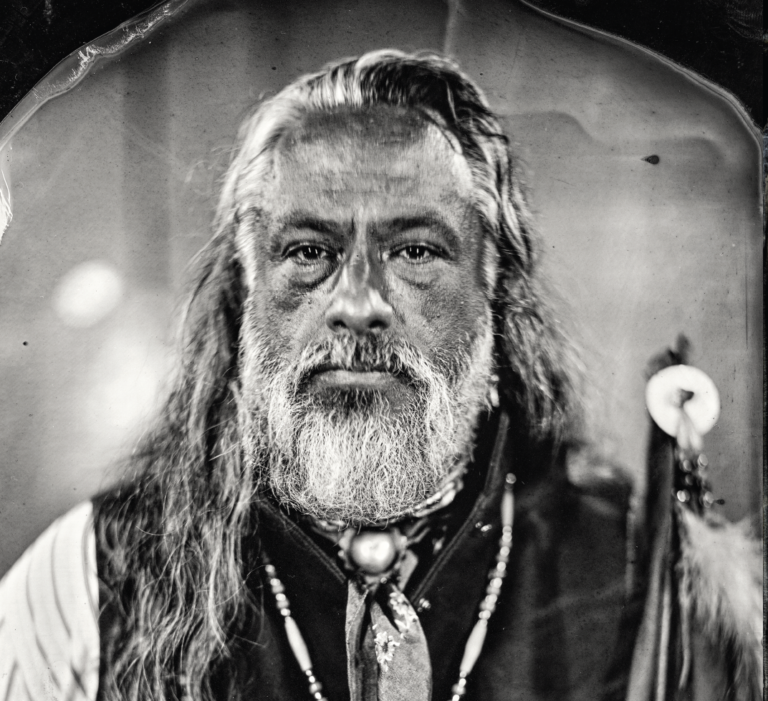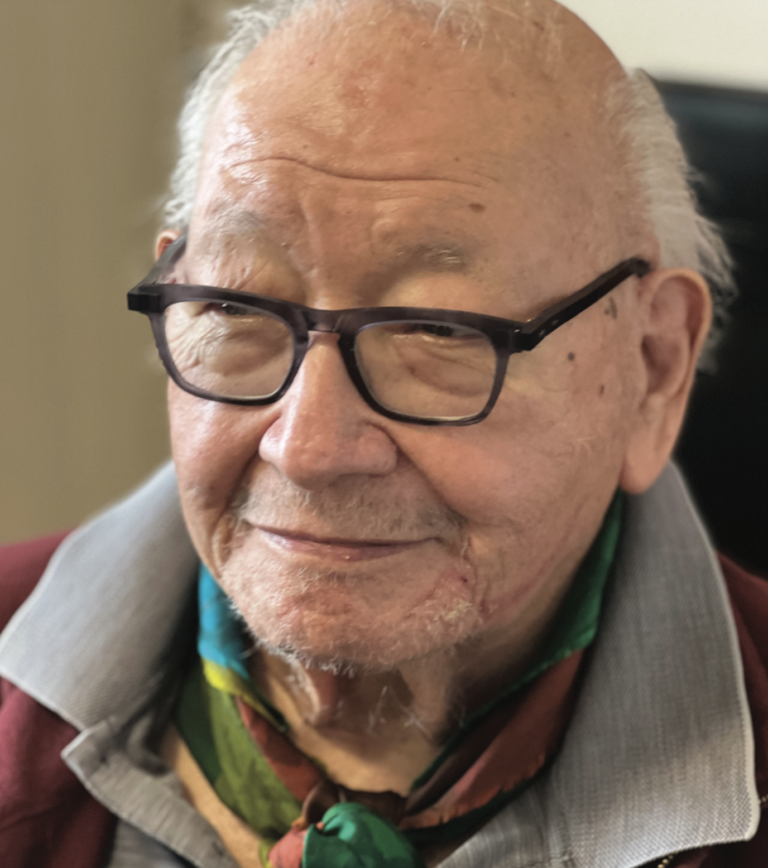WALK TEN BLOCKS IN SANTA FE and you’d be hard pressed not to run into a meditation teacher. Enter a local bookshop and meditation guides are front and center. And your phone has access to hundreds of meditation apps, ready and waiting. Makes sense, right? After all, science has shown that meditation makes you calmer, less stressed out, lets you sleep better, lowers your blood pressure and maybe even slows dementia.
That’s all nice, except Dean Johnson would tell you that’s not really what meditation is about. Rather, as Sam Harris (yes, also a meditation teacher) explains on his app, Waking Up, meditation is really about radically transforming your sense of who and what you are.
It’s not about focusing on the breath, it’s not about “not thinking.” Rather, it’s about becoming keenly aware of each of your thoughts, and realizing they do not constitute “you.” Much of our misery, says Dean, comes from us “identifying with our thoughts, thinking they somehow define us, that they are us.” So the idea is that once you become aware of these thoughts, watch them harmlessly come and go, and begin to understand they are not you, you will notice that there is an observer behind all of this. And who is that?
Dean Johnson is a former monastic whose Sadhana, or spiritual practice, led him to deep experiences of non-dual meditation, the work of discovering the answer to that exact question.
A lot of people get into meditation because it calms them, relaxes them. Initially they focus on the breath or maybe do body scans. They quiet the monkey brain, the chatter. Then, at some point, they cease trying to stop their thoughts, and instead learn to disassociate from them, stop being triggered by them. That is the beginning of non-dual meditation?
Yes. The ultimate goal of meditation is Yuj and comes from the Sanskrit meaning union, connection. We are all ultimately connected to everything.
Like that fleeting sense when you are out in nature, that you are part of everything.
Like that.
But most of the time, we feel more like, as Alan Watts puts it, A separate center of feeling and action, living inside and bounded by the physical body, an isolated ego inside a bag of skin.
Exactly. He calls that a hallucination. And it’s not just his opinion. Science proves this union. We are all made of the same matter.
I read an interview with Brian May, the Queen guitarist, who also happens to be an astrophysicist and studies zodiacal dust clouds. He says they can now tell that all humans, animals and plants — everything on the Earth — are made of the dust from supernovae. So when Joni Mitchell said, We are stardust, she was right.
She was right.
So how do you focus on this union? How do you practice non-dual meditation?
It’s simple. So simple you can miss it.
First, its recognizing that our thoughts are not us. Slowly you become aware that you are an observer, watching all of these thoughts run through your head. Just ask yourself, Where do these thoughts come from? That’s transformative right there.
They are surprisingly random and chaotic.
Yet they hold so much power over us.
Imagine you are observing what is happening in your mind. Look at every thought, feeling and perception. Then realize that you are not those thoughts, you are not those things, you are the observer of those things, of what is arising around you.
We give these thoughts incredible importance, but they are nothing, just mere things that come and go. But we identify with these, and they define who we are. They make us happy, mad, excited, sad. We get furious with people over these thoughts.
Every day, your thoughts come and go by the thousands. They come at you fiercely, and we attach to the thoughts, we identify with the thoughts. We think they are truth, we think they are us. Thinking is the most addictive thing that humans do. We are addicted to thinking. And 95% of what we think about is worthless.
So you notice this and release the attachment to the thought. That’s the beginning of the journey.
You’re questioning that thing that defined you.
Then what?
Once you distance yourself from your thoughts, you begin to see two things at play.
First, there is the ego, that thing that makes us think who we are, that is driven and triggered by our thoughts. The thing that feels bravado, anxiety, insecurity, all of that. The thing that makes us suffer. This compilation of thoughts is actually who we think we are. And most of us are driven by it our whole lives.
Then there is the self, what the Hindu call Brahman, the ultimate reality in the universe. Call it God, Jehovah, Brahman, Christ, whatever you want. It is an always-existing, all-pervasive awareness. It is consciousness. It is our nature.
It’s what happens when you open your eyes in the morning. Just before the thoughts start flooding in.
It’s always there. You don’t have to conjure it.
We’re not talking about the objects of awareness that we usually focus on, it’s the awareness itself, the awareness of being aware.
Sam Harris says, Don’t focus on consciousness, focus as consciousness.
Precisely.
The purpose of meditation is to awaken into this awareness. You are aware, conscious at all times, and we are simply paying attention to that, not random thoughts.
We are conditioned to think all of this stuff is happening outside of our mind – that’s duality. But in truth it all happens in our consciousness, in our mind. That’s non-duality, that’s union with everything.
So with meditation, we start by calming the mind. Breathe. Be still. Be quiet. Then observe what arises. It’s not a question of not thinking, rather it’s turning the attention to these things that are arising in our mind. And it’s seeing these thoughts for what they are – watch them come and go. Don’t hold on to or be affected by any of them.
This is the beginning of the healing process. You gain a beautiful and subtle detachment to everything that arises. In awareness, there is perfect freedom from all of these objectified things – what we think we should be, what we think we should do, all of these random thoughts. In that detachment, there is spaciousness in our consciousness. And you begin to recognize the illusion of the egoic self, the thing that creates all of our suffering.
Awareness is one constant behind everything. It’s the same awareness of every sentient being. It is not individualized. It is consciousness itself. And when you taste that experience, it is utterly transformative. It is spiritual awakening. Consciousness is constant, all-pervading and infinite.
And you see every being as the same awareness. Nothing is separate from what is all-pervading. There’s no judgment, just a shared awareness. This is love. This is non-dual meditation.
There’s no belief system here. We all experience consciousness every day. It’s about paying attention to it. I don’t try to convince anyone to believe in anything. Just relax into your being. Just pay attention.
You know, people say, Just let go of this or that. That doesn’t work. You can’t just make it go away. But you can see it clearly and realize it’s not you. When you see a thought for what it is, it loses its power. It’s just a thought. It’s not you.
Do you know Richard Rohr from the Center for Action and Contemplation in Albuquerque?
I love Richard.
He has this idea that Christ is another name for everything. That sounds a lot like what you’re talking about.
When Jesus says I am, the Aramaic actually says I am being. I am the very nature of what you are. It’s a unifying energy. Christ was unifying the being of all existence.
It’s the pathless path. We Westerners are not good at that. It seems like the mistake we make over and over is focusing on the teacher as the answer instead of what they’re saying and you get this codified religion built up around them that has little to do with their actual words.
Joseph Campbell says all of these religions are true, but we pay attention to the denotation instead of the connotation. It’s a literary mistake. We should read them like prose, not poetry.
One hundred percent. We create these belief systems, these dogmas, these religions. For the first two centuries after Jesus, dogma was at a minimum and there were many different sects experiencing a wide variety of Christian life and thought.
But the Roman Emperor Constantine wanted to institutionalize it, to gain control over people, and it became the official religion of Rome in 380.
And it was only then – 350 years after Jesus died — that they created the Canon, deciding what would be in the Bible and what wouldn’t.
So Constantine got his way and his control over people, but a lot was lost. The book of Thomas, for instance, reads like a Hindu text. There’s the amazing quote from Thomas where Jesus says, Whoever drinks from my mouth will become like me; I, too, will become that person.
I don’t think Constantine would have liked that.
No. Deep mysticism is revolutionary. And deep mysticism is also simple. All of the eastern sages taught very simply. No rules, parables. Like how Jesus taught.
Look, it’s hard to get past the deep conditioning of our individuality, of our body. But when you relinquish this, the suffering goes away.
And consciousness remains. You are filled with gratitude and love, like that fleeting moment on your walk in nature. It’s transformative. And when that happens, you always have it. It never leaves. And when you taste that, even a little bit, you want more. And more.
It’s incredibly freeing, there’s nothing like it.
And it was there the whole time.
Learn more at StudioNiaSantaFe.com
Photo SFM



